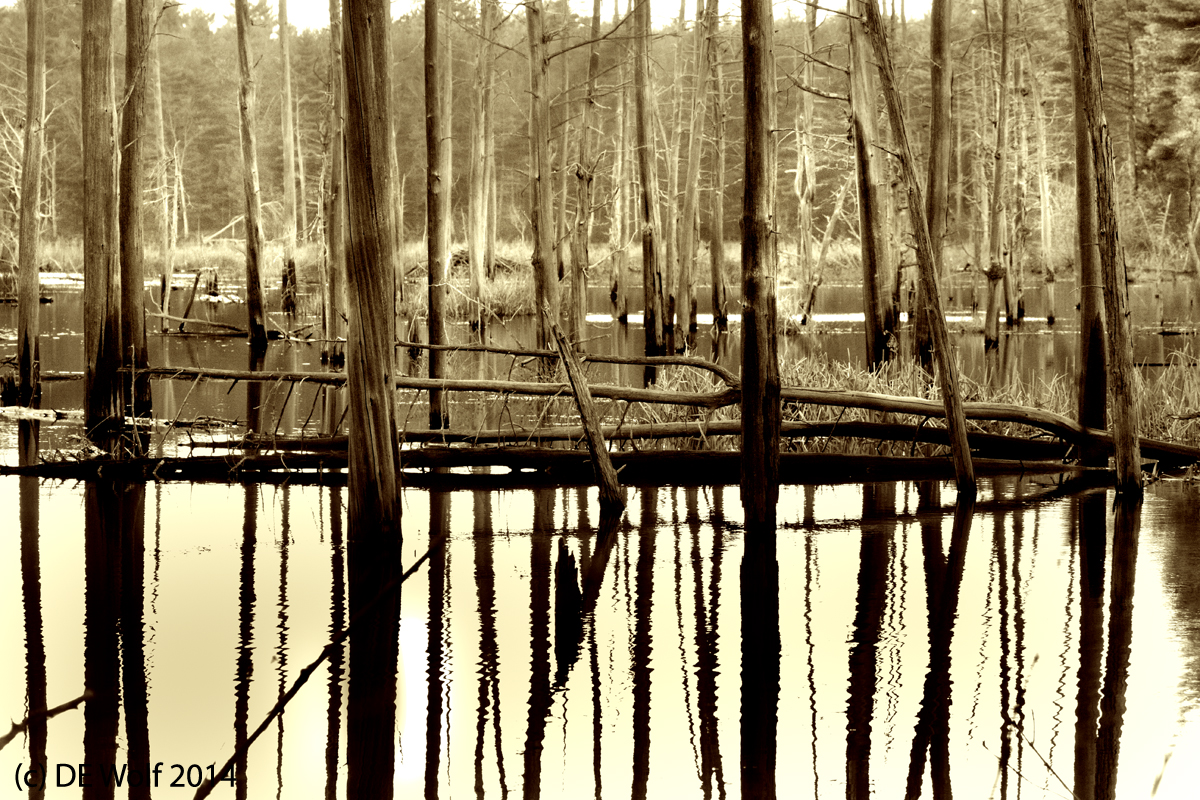The Assabet River National Wildlife Refuge is a 2,230 acre wildlife refuge that was reclaimed from the U.S. Army’s Fort Devens-Sudbury Training Annex on March 26, 2005. Part of the Assabet River watershed, it is the epitome of an eastern Massachusetts wetland. So if you think of scrubby trees, piney groves, and stomping through soggy marshes, you’ve got the image, and it is truly spectacular in its wildness.
Back at the height of World War II in 1942 the federal government seized the land by eminent domain, giving residents only about ten days to pack up and leave, and paying them, well, not so much. Most intriguing today are decaying World War II era ammunition bunkers. The significance of the site was that it was convenient to railroad shipping to the Boston Navy Yard (of ammunition), yet far enough inland as to be out of range of German battleships. could not shell the area. Each of the 50 bunkers, officially referred to as “igloos,” has inside dimensions of 81x26x12 feet, with a curved roof. Sides and roofs were mounded with dirt for extra protection and disguised from aerial view.
After WWII this site served as a troop training ground, ordinance testing center, and laboratory disposal area for Natick Labs (U.S. Army Soldier Systems Center). Not surprisingly, it became categorized by the EPA as a “Superfund” clean-up site. It was was contaminated with arsenic, pesticides and lots of other nasties. The US Army spent years cleaning up the site and in 2000 turned it over to the U.S. Fish & Wildlife Service. Today as you walk through the woodlands and along the lake you suddenly come upon some solitary feature, a fireplace or piping, not to mention the bunkers, which speaks to the refuge’s past.
It is one of those places that seems to beckon the photographer, and I had a wonderful, and I think successful, time walking there in the waning light on December 27. The image that I posted on January 2 (The path ahead to the New Year) was taken there as was Figure 1* an example of the marshland with drowned trees at its best.
This image I hope speaks to the fact that wild places can be reclaimed. But there is something profounder going on. In summer the woods are dense, and it’s all kind of a playground. But in winter there is a harshness, both of landscape and of environment. If you shut your eyes to the fact that you can easily return to the warmth of your car and then back to hearth and home, you feel your own fragility and you become keenly aware that nature survives, the creatures of the forest and the trees have been in these post-glaciation woods for thousands of years and before that in other forms, indeed, stretching back millions of years. This is only an instant, and that ultimately is the message of wild landscape photography.

